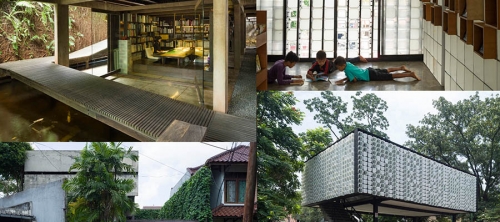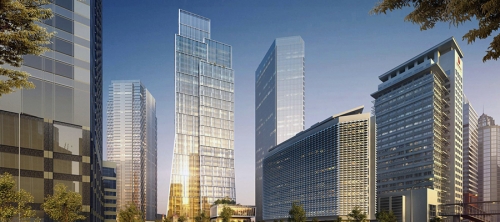Indoor Air Health & Comfort
 Administrator
Administrator 8.Mar.2018

Air is a very important element for living things. Good or bad the air quality will cause an impact to the environment which can affect a person's health. In this case the air quality is divided into two, the quality of outdoor and indoor air. In a densely populated city, the problems that are often encountered in outdoor air such as pollution from vehicle fumes and waste piles that are not disposed into the right place. In the meantime, problems affecting the decrease in indoor air quality due to emerging microbes and the lack of air ventilations.

What we need to be aware of?
• According to the US EPA: the level of pollutants in the room can reach 2-5 times higher or extreme 100 times higher than outdoors
• 5 top level cause a risk to public health Sick

Sick Building Syndrome (SBS)

Sick Building Syndrome (SBS)
Sick Building Syndrome (SBS) is used to describe situations in which building occupants experience acute health and comfort effects that appear to be linked to time spent in a building, but no specific illness or cause can be identified.

Symptoms:
• Acute discomfort, e.g., headache; eye, nose, or throat irritation; dry cough; dry or itchy skin; dizziness and nausea; difficulty in concentrating; fatigue; and sensitivity to odors.
• The cause of the symptoms is not known.
• Most of the complainants report relief soon after leaving the building.
Building Related Illness (BRI)

Building Related Illness (BRI)
“Building Related Illness” (BRI) is used when symptoms of diagnosable illness are identified and can be attributed directly to airborne building contaminants.

Symptoms:
• Building occupants complain of symptoms such as cough, chest tightness, fever, chills, and muscle aches.
• The symptoms can be clinically defined and have clearly identifiable causes.
• Complainants may require prolonged recovery times after leaving the building.

Sources of Indoor Air Pollution In a Typical Office Building

Indoor Air Quality (IAQ) contaminants
-contaminants.jpg)
Source of Indoor Air Contaminants

Reducing Pollutans in Indoor Air
NATURAL VENTILATION INVOLVES

NATURAL VENTILATION INVOLVES
Infiltration : Random/ intentional flow of outdoor air through windows, cracks and a variety of openings in the buildings.
Exfiltration : Movement of air from indoor spaces to outdoor.

Buildings should provide adequate ventilation for exchange air. Although the usage of air conditioner provides benefits, but natural airflow is still needed to maintain a healthy and quality air environment. Another way is to plant and create a garden.
Tags : #airhealth, #indobuildtech
Recently Submitted Blog Posts
Must Read
 2 Arsitek Indonesia Terpilih Bersaing di Aga Khan Award
2 Arsitek Indonesia Terpilih Bersaing di Aga Khan Award
Arsitek asal Indonesia kian mengharumkan nama bangsa di kancah arsitektur internasional.
 Sequis Tower Raih Penghargaan Arsitektur Tingkat Internasional
Sequis Tower Raih Penghargaan Arsitektur Tingkat Internasional
Salah satu gedung perkantoran di Jakarta, Sequis Tower berhasil meraih penghargaan The International Architecture Awards 2018 kategori Skyscraper/High-Rises yang diselenggarakan di Acropolis, Athena, Yunani, akhir bulan September lalu.
 Desain Rumah Modern & Mewah dengan 2 Konsep Hunian Unik
Desain Rumah Modern & Mewah dengan 2 Konsep Hunian Unik
Rumah adalah ekspresi personal para pemiliknya. Terkadang, ekspresi personal masing-masing penghuni yang berbeda membuat konsep hunian seringkali tidak beraturan.





